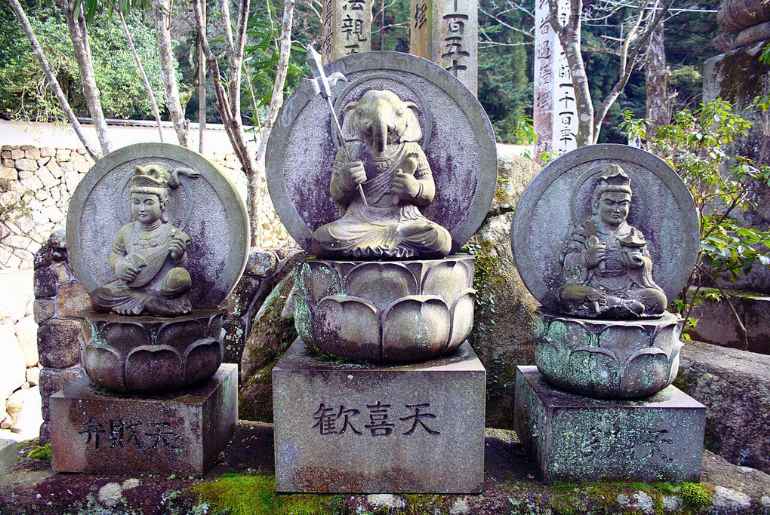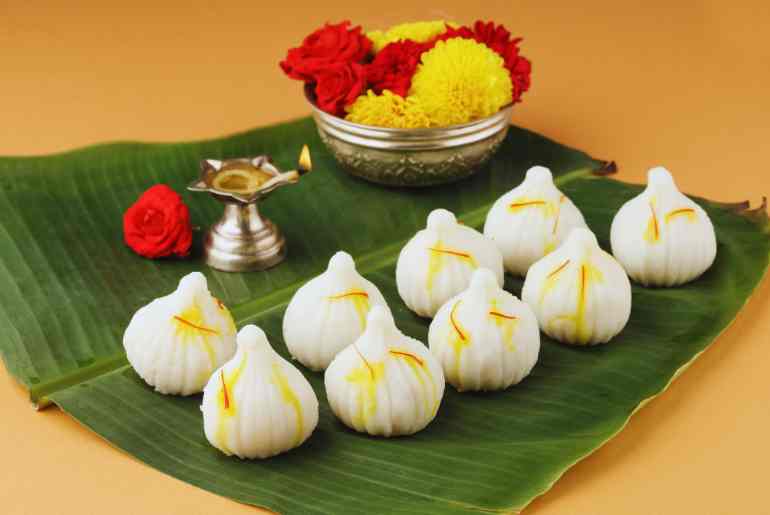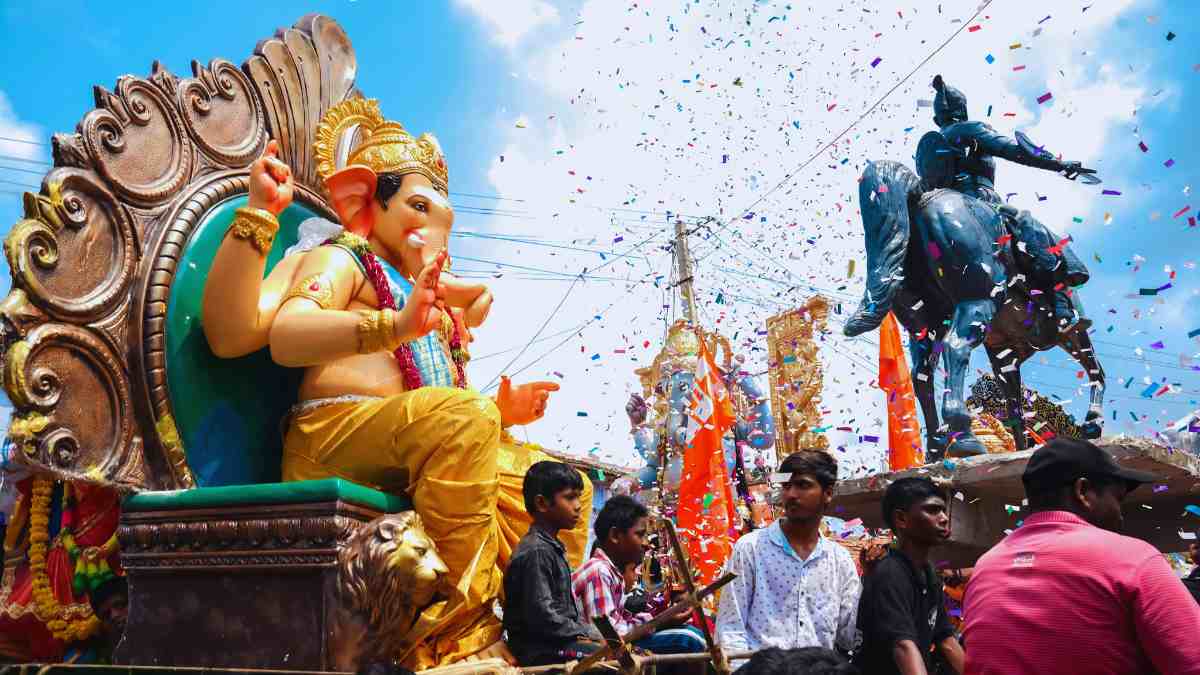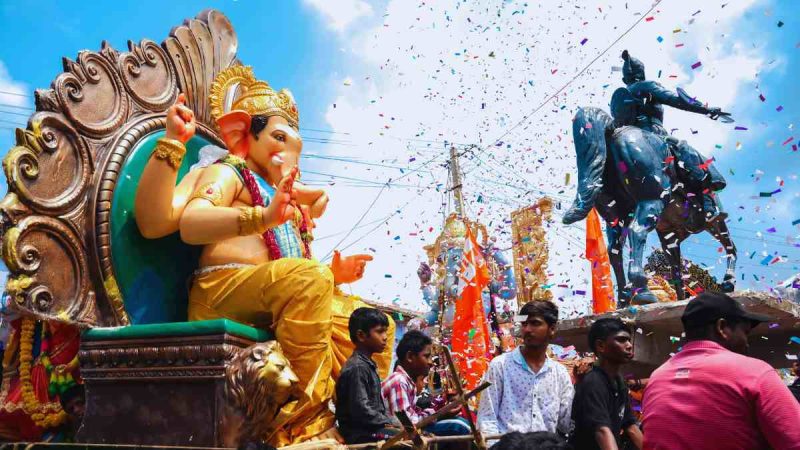Ganesh Chaturthi is one of the grandest festivals in India, that reverberates divinity, celebrations and splendour. Think Ganesh Chaturthi, and the beautiful image of Lord Ganesh comes to mind, the aroma of his favourite modak tickles our nostrils, and excitement just fills the air. But we’re here to tell you that Ganesh Chaturthi is not just a day of festivities in India. In fact, you can trace its origin back to India’s fight for Independence. Lord Ganesha, the remover of obstacles, is also revered outside India. Confused? Well, read on to know 7 really interesting facts about Ganesh Chaturthi that shall leave you awestruck.
7 Fascinating Facts About Ganesh Chaturthi
1. First Ganesh Chaturthi Celebration Dates Back To The Era Of Chhatrapati Shivaji Maharaj
Many believe that Lord Ganesha’s birthday, Ganesh Chaturthi, was first celebrated when the Chalukya, Satavahana and Rashtrakuta dynasties ruled between 271 BC and 1190 AD. However, the first historical record of Ganesh Chaturthi celebration dates back to the era of Chhatrapati Shivaji Maharaj.
Lord Ganesha was considered to be their Kuladevata or family deity. Chhatrapati Shivaji Maharaj, the doyen of the Maratha empire, celebrated Ganesh Chaturthi with great fervour in Pune in the 1600s. Post this, the festival continued to be celebrated by the Peshwas.
2. Lord Ganesha Is Worshipped Across The Globe

Lord Ganesha’s divinity isn’t just spread across India. In fact, his blessings travel all the way across the boundaries of India to countries like Thailand, Cambodia, Japan and even Afghanistan, to name a few. But his depiction differs from one region to another from the Indian avatar. The posture and weapons in his hand are quite different. China worships a deity called ‘Kangi Ten’. Two elephant-headed figures are seen embracing each other.
Lord Ganesha also makes an appearance in Indonesia’s 20,000 Rupiah currency note. Cambodia worships a God called ‘Prah Kenes’. Cambodian Ganesha images of the pre-Khmer period depict the Lord with wide-fan-like ears, no neck, no-head dress and no-pot belly.
3. Bal Gangadhar Tilak Started Public Ganesh Chaturthi Celebrations
Lord Ganesha was a popular deity worshipped across India. And Ganesh Chaturthi remained a homely affair. In the year 1893, freedom fighter Bal Gangadhar Tilak transformed the festival from a private celebration to a grand public event to unite India against the British. To curb mass gatherings, the British forbade Indians from meeting in large groups unless it was for religious purposes.
So for Ganesh Chaturthi, Tilak put out huge hoardings of Lord Ganesha on pavilions in Mumbai. He even encouraged huge Ganpati statues and public celebrations. Lord Ganesha, the removal of obstacles not only brought divinity to the Indian Independence struggle, but also inculcated a sense of patriotism in the people.
Also Read: 5 Fascinating Ancient Ganesh Temples In India You Need To Visit
4. It’s Considered Unlucky To Look At The Moon During Ganesh Chaturthi
During Ganesh Chaturthi, while revelling in colourful celebration and gorging on delicious mithai, make sure you don’t glance at the moon. Why? Well, it’s considered unlucky to do so. According to Hindu tales, Lord Ganesha was riding atop his vahan, mooshik, the mouse, while returning from a feast. On seeing a snake, the mouse dropped Lord Ganesha. Due to the impact of the fall, his belly burst open and the feast spilt out.
Ganesha gathered all the called laddoos and modak, put them back in his belly. He then tied the snake around his belly to hold it. The Moon, Chandra watched this and burst out laughing. Enraged by this, Ganesha broke his tooth and threw it at the Moon. He cursed the Moon that he can never shine again. The Moon later sought forgiveness, and the curse was undone. But till today, looking at the moon during Ganesh Chaturthi is still considered a bad omen.
5. Mumbai’s Lalbaugcha Raja Hosts India’s Longest Immersion Procession
Lalbaugcha Raja Mandal is one of the oldest mandals in India, set up in 1934 in the Peru Chawl locality. The chawl was shut in 1932. And the locals who were fishermen and vendors, promised to get a Ganapati idol and set it up in the place. The first-ever Lalbaugcha Raja was set up by fishermen. The Kambli family in Mumbai has been designing and creating the Ganpati idols since 1935.
Lalbaugcha Raja hosts the longest immersion or Visarjan procession in India. It starts all the way at 10 am in the morning and ends the next morning. The second-longest immersion procession takes place in Andhericha Raja.
6. Savji Community Follows 100-Year-Old Custom Of Non-Veg Offerings
Savji community of Hubballi in Karnataka has been following a 100-year-old custom of offering non-vegetarian food to Lord Ganesha on Iliwara which is a day after Ganesh Chaturthi. The community which abstains from non-veg during the Shravan month and Ganesh Chaturthi, go back to their usual diet on Iliwara.
With love and devotion for Lord Ganesha, with many from the Savji community seeing them as their own son, lovingly offer non-vegetarian food to the deity. This includes dishes like fish fry, mutton keema, chicken biryani and more cooked in households. As part of an age-old custom, a fish is placed on Lord Ganesha’s trunk on Iliwara. This is certainly a Ganesh Chaturthi fact, you may not have known!
7. Lord Ganesha Nicknamed “Modakpriya” Is Offered 21 Modaks

Ganesh Chaturthi or Ganeshotsav, is incomplete without making modak, a steamed dumpling with a jaggery-coconut filling. The beloved deity is even nicknamed “Modakpriya” or the “one who loves modak.” There are many lores that tie the sweet dish to the elephant-headed deity. One of them narrates the tale of Queen Menavati, Lord Ganesha’s maternal grandmother who would tirelessly make laddoos for her grandson, only for him down them quickly. So, she started preparing modaks, which would take lesser time to make and would leave him satisfied.
Another tale depicts the story of Lord Shiva, Goddess Paravati and Lord Ganesha dining at Devi Anusuya’s home. To satisfy his insatiable hunger, Lord Ganesha was given a single modak. It instantly filled him up and he burped. Surprisingly, Lord Shiva, who hadn’t yet eaten anything, burped 21 times. So, Goddess Paravati took the Modak recipe from Devi Anusuya to prepare it for her loved ones.
Also Read: Did You Know There’s A Ganesh Temple In Pune Where Lord Ganesha Has 3 Trunks & Sits On A Peacock?
So these are some of the most interesting facts about Ganesh Chaturthi, that you might not have heard of. Till then, enjoy the festivities with love, job, fervour and hope. Ganpati Bappa Morya!
Cover Image Courtesy: Canva Pro/ Sairam Rasa
For more such snackable content, interesting discoveries and the latest updates on food, travel and experiences in your city, download the Curly Tales App. Download HERE. First Published: August 19, 2025 3:00 PM




